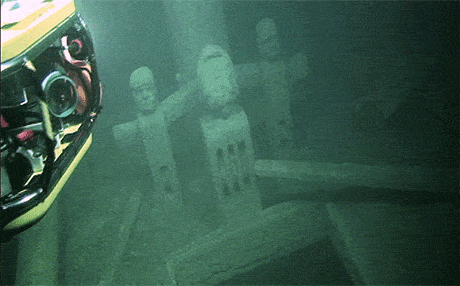Sulphur and iron accumulation has once again been found in wood samples from old shipwrecks in the Baltic Sea. This time the samples are from the merchant vessel Ghost wreck and the warships Sword and the Crown.
Wood samples from the ships have been analysed by a group of scientists from the University of Gothenburg, Stockholm University and University of Calgary. The results are published in the latest issue of Scientific Reports.
Scientists from the same team have previously reported large amounts of sulphur and iron accumulation in the warship Vasa. In that study, the scientists found an outbreak of acidity and sulphate salts on the surface of the hull and other wooden objects.
‘This is the result of biological and chemical processes that occur naturally in low-oxygen waters and in sediments,’ says Yvonne Fors from the Department of Conservation at the University of Gothenburg and one of the scientists behind the article.
However, even if sulphur and iron accumulation is commonly occurring in old waterlogged wooden shipwrecks, it can cause problems for future preservation of the ships in a museum environment.
Ships of high archaeological value
The Ghost wreck was found by coincidence in the Baltic Sea in 2003. The Dutch merchant vessel from the 1600s was discovered by a private diving company in connection with a search for the DC3 that vanished in the area in the 1950’s. The Ghost wreck has turned out to be of great archaeological importance, and there are far-reaching plans to recover, and conserve the ship. If the samples analysed thus far are representative of the entire hull, the ship may not have to face the same problems as the Vasa.
‘The iron amounts in the wood seem to be comparatively low, and the potentially most aggressive sulphur compounds don’t seem to occur in any significant levels. But we can’t be more certain until we’ve done some more analyses. The more we know about the chemical composition of the wood, the better the conservation efforts can be prepared,’ says Fors.
More ships will probably be recovered
Also the royal warship Crown may eventually be recovered.
‘We have analysed samples from the Crown during a few years and have now also had the opportunity to analyse samples from the warship Sword, which was wrecked in the same battle in 1676,’ says Fors.
The Crown displays potentially more aggressive sulphur compounds and higher iron concentrations than the Ghost wreck. Of the three studied ships, the highest levels of both sulphur and iron were found in wood samples from the Sword. Similar accumulation has previously been analysed in wood samples from the Vasa, Riksnyckeln, Götavraket, Stora Sofia, the British Mary Rose, the Australian Batavia and the Viking ships of Skuldelev. Link to the paper.

